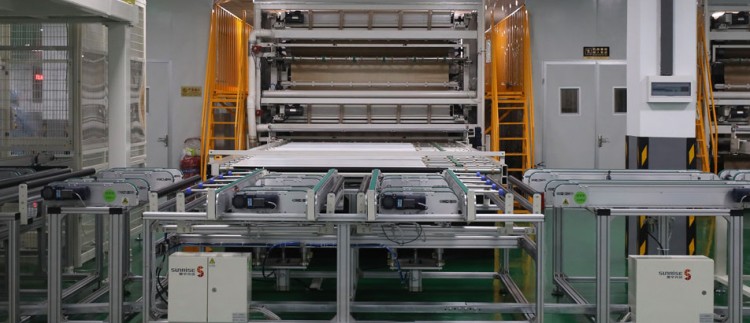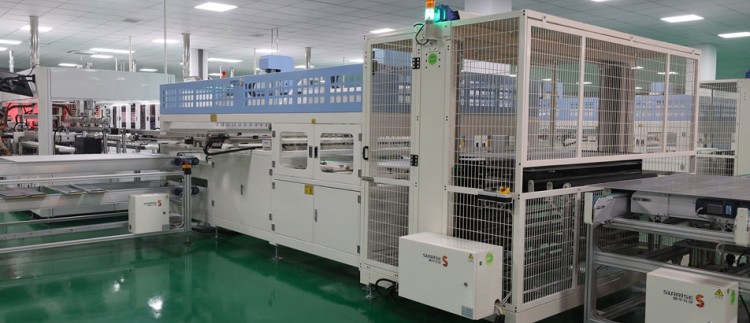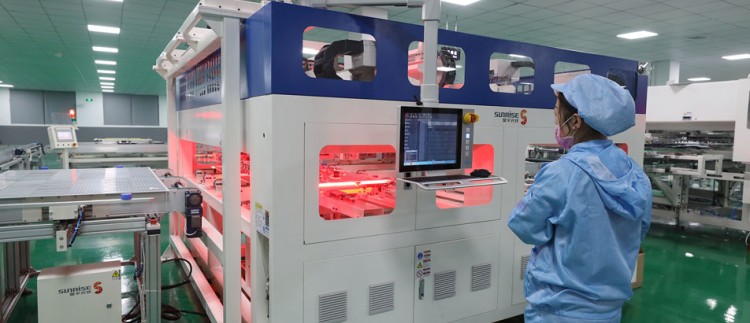TALKING ABOUT SOLAR MODULES, TECHNOLOGY DEVELOPMENT
Talking about N-type Solar Modules after the SNEC exhibition "N-type tuyere with infinite possibilities"
As a rapidly growing photovoltaic brand, SUNRISE, one of our providers, has been low-key and steady over the years. Since its establishment in 2006, Sunrise has developed from a small module factory with an annual output of 10MW and only a few production lines to today's 2GW. During this period, it has experienced several technological iterations in the photovoltaic industry and still maintains tenacious vitality and innovation.
During SNEC this year, Sunrise presented its latest module products, which attracted widespread attention.
SUNRISE layout: TOPCon first, HJT and other technologies diversification.
At this year's SNEC exhibition, SUNRISE brought the latest TOPCon and HJT modules to the show, among which the power of HJT modules was as high as 720W, and TOPCon modules launched 580W and 425W series for rooftop projects. Judging from the module products on display, SUNRISE has reached an industry-leading level in the layout of N-type modules.
The company launched a new N-TOPCon series module this year, using 182mm N-type high-efficiency cells. Compared with traditional modules, SUNRISE TOPCon series modules are blessed by innovative technologies such as passivated contacts, ultra-fine multi-busbars, and high-density packaging. Up to 580W, in addition, the attenuation of this series of modules is ≤1% in the first year, the linear attenuation is ≤0.4%/year, and the bifacial rate is up to 85%. It can easily meet various application scenarios such as large ground power stations, industrial and commercial roofs, and household roofs. At present, the new N-TOPCon series has been fully put into production, and it is expected that the module production capacity will reach 4GW by the end of 2023. The market prospect is quite broad, and we also have sufficient production capacity to ensure sufficient and stable supply.
For the heterojunction (HJT) route, SUNRISE also expressed high recognition.
"From an industry perspective, heterojunction (HJT) cells are the most promising N-type representative, and the ultimate efficiency is expected to exceed 30%. However, at present, more manufacturers choose TOCon technology, including our SUNRISE, because TOPCon technology and PERC have Higher compatibility, relatively smaller investment."
Regarding the future development trend of N-type technology, SUNRISE said that the share of heterojunction will continue to rise in the future and believes that the two technology routes may develop together and be superimposed with perovskite batteries. For the future development of technology routes, Yang Yong said that he will closely follow the market and technology development trends and formulate corresponding reserve plans.
Behind the sizzling SNEC exhibition this year, in addition to the general trend of N-type iteration, there are also clouds of fluctuations in the industrial chain. As the price of the industrial chain goes down this year, the component link is more sensitive to price fluctuations because it is closer to the downstream.
In this regard, SUNRISE said that in the environment of fluctuations in the entire market and industrial chain, it is inevitable that the battery and module links will be affected.
"As far as I know, the price of silicon materials has fluctuated more recently, with an average price of about 130 yuan/kg, and the price is close to half compared with the peak period. It can be judged that the current price of silicon materials is at the lowest point in 2023 or even two years. And The price of silicon wafers ushered in a cliff-like decline after maintaining stability for nearly two months. The decline in the first half of May was 10%-15%, and the index fell by nearly 25% within two weeks. However, considering the production reduction and destocking of silicon material companies And so on, there may be other variables in the price trend of the entire industry chain in the future.”
As for the judgment of the industry chain trend in the second half of the year, SUNRISE believes that "according to the current price trend, the second half of the year may still be in a downward trend."
But despite this, SUNRISE is still full of confidence in the company's core components.
"For the impact of fluctuations in the industrial chain, the way we respond is to adjust our strategic layout based on market conditions. At present, the average price of modules show a slowdown trend, but the recent price adjustment has fluctuated greatly. The wait-and-see orders are also motivated to place orders one after another. On the other hand, large-scale domestic power plants have also delayed bidding for some projects. The market also expects that after the SNEC Photovoltaic Exhibition, it will gradually become clear, and the overall demand in the second half of the year will also increase sharply. It will gradually return to a stable state, and overall, fluctuations in raw material prices will not have much impact on the company's main business."


